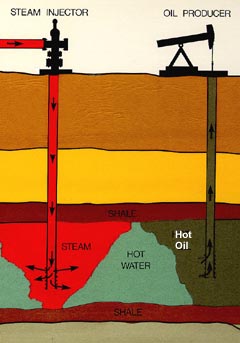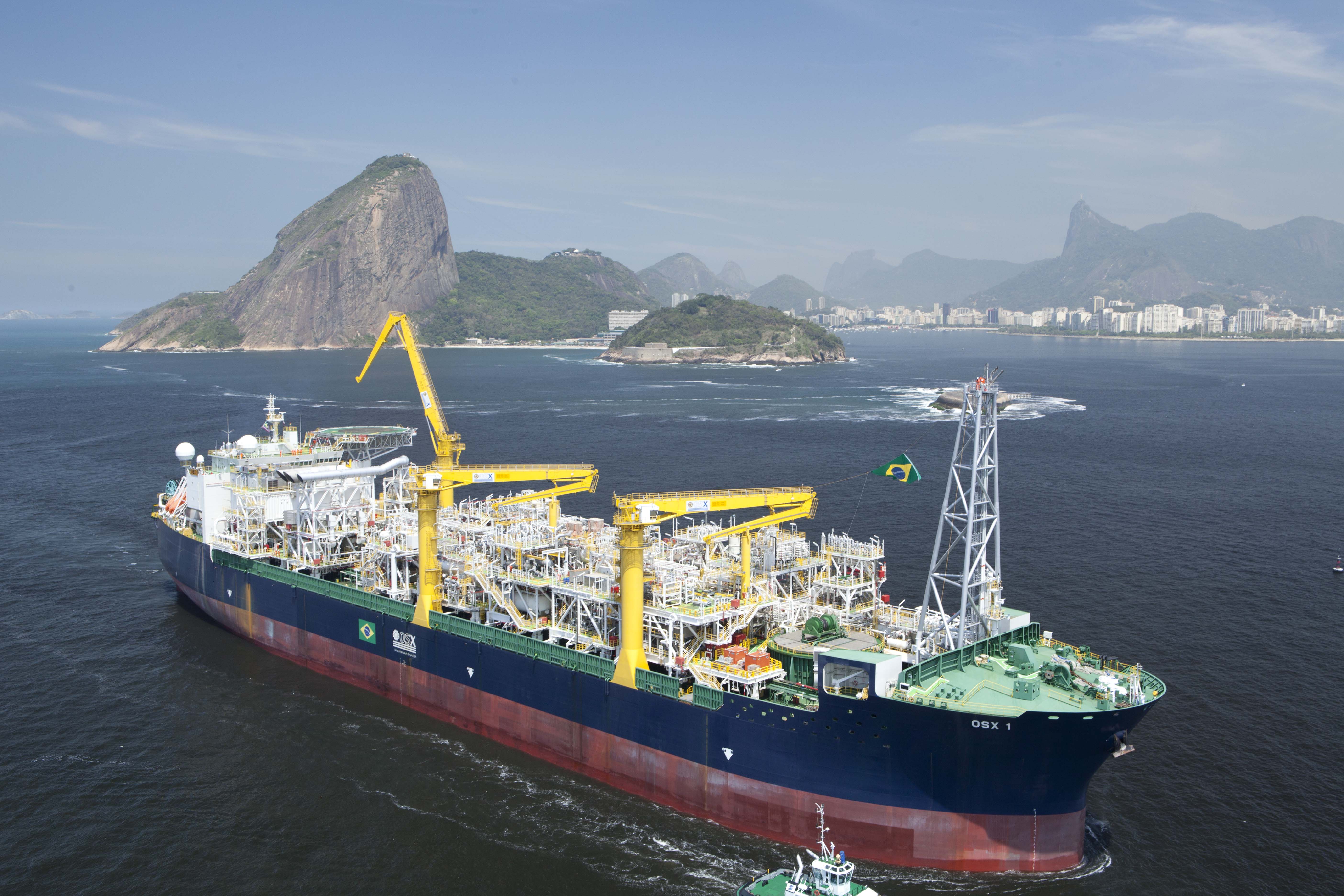|
Badejo Field
Badejo Field is an offshore oil field in Brazil. It is a mature oil field located in the southwest part of the Campos Basin off the coast. Above of it is laying partly the Membro Siri (sometimes referred just as Siri) extra heavy crude oil field with and 12.8° API gravity. Oil was discovered in the Membro Siri reservoir in 1975, but was considered uneconomical to develop this time. In 2008 the FPSO ''Petrojarl Cidade de Rio das Ostras'' started test production of the Siri crude. Part of the process equipment on the FPSO is an electrostatic coalescer with the VIEC technology from Hamworthy. The process system was delivered by Expro. It consists of two separator stages and the electrostatic coalescer. Using high processing temperature the process system is designed to output crude oil with an export specification of 1% BS&W Basic sediment and water (BS&W) is a both a technical specification of certain impurities in crude oil and the method for measuring it. When extracted ... [...More Info...] [...Related Items...] OR: [Wikipedia] [Google] [Baidu] |
Brazil
Brazil ( pt, Brasil; ), officially the Federative Republic of Brazil (Portuguese: ), is the largest country in both South America and Latin America. At and with over 217 million people, Brazil is the world's fifth-largest country by area and the seventh most populous. Its capital is Brasília, and its most populous city is São Paulo. The federation is composed of the union of the 26 states and the Federal District. It is the largest country to have Portuguese as an official language and the only one in the Americas; one of the most multicultural and ethnically diverse nations, due to over a century of mass immigration from around the world; and the most populous Roman Catholic-majority country. Bounded by the Atlantic Ocean on the east, Brazil has a coastline of . It borders all other countries and territories in South America except Ecuador and Chile and covers roughly half of the continent's land area. Its Amazon basin includes a vast tropical forest, ho ... [...More Info...] [...Related Items...] OR: [Wikipedia] [Google] [Baidu] |
Campos Basin
The Campos Basin is one of 12 coastal sedimentary basins of Brazil. It spans both onshore and offshore parts of the South Atlantic with the onshore part located near Rio de Janeiro. The basin originated in Neocomian stage of the Cretaceous period 145–130 million years ago during the breakup of Gondwana. It has a total area of about , with the onshore portion small at only . Etymology The basin is named after the Campos dos Goytacazes city. Description The Campos Basin is bound on the south by the Cabo Frio High, separating the basin from the Santos Basin and on the north by the Vitória High, forming the boundary with the Espírito Santo Basin. Campos Basin contains the Paraiba do Sul River delta. Tectonic history The South Atlantic margin developed on Archean stable cratons consisting of hard and resistant rocks and partly on the Neoproterozoic mobile belts composed of less resistant metamorphic rocks.Clemente, 2013, p.3 The Precambrian basement of the Santos ... [...More Info...] [...Related Items...] OR: [Wikipedia] [Google] [Baidu] |
Heavy Crude Oil
Heavy crude oil (or extra heavy crude oil) is highly-viscous oil that cannot easily flow from production wells under normal reservoir conditions. It is referred to as "heavy" because its density or specific gravity is higher than that of light crude oil. Heavy crude oil has been defined as any liquid petroleum with an API gravity less than 20°. Physical properties that differ between heavy crude oils and lighter grades include higher viscosity and specific gravity, as well as higher molecular weight hydrocarbon composition. In 2010, the World Energy Council defined extra heavy oil as crude oil having a gravity of less than 10° and a reservoir viscosity of more than 10,000 centipoises. When reservoir viscosity measurements are not available, extra-heavy oil is considered by the WEC to have a lower limit of 4° API. In other words, oil with a density greater than 1000 kg/m3 (or a specific gravity greater than 1) and a reservoir viscosity of more than 10,000 centipoi ... [...More Info...] [...Related Items...] OR: [Wikipedia] [Google] [Baidu] |
API Gravity
The American Petroleum Institute gravity, or API gravity, is a measure of how heavy or light a petroleum liquid is compared to water: if its API gravity is greater than 10, it is lighter and floats on water; if less than 10, it is heavier and sinks. API gravity is thus an inverse measure of a petroleum liquid's density relative to that of water (also known as specific gravity). It is used to compare densities of petroleum liquids. For example, if one petroleum liquid is less dense than another, it has a greater API gravity. Although API gravity is mathematically a dimensionless quantity (see the formula below), it is referred to as being in 'degrees'. API gravity is graduated in degrees on a hydrometer instrument. API gravity values of most petroleum liquids fall between 10 and 70 degrees. In 1916, the U.S. National Bureau of Standards accepted the Baumé scale, which had been developed in France in 1768, as the U.S. standard for measuring the specific gravity of liquids less ... [...More Info...] [...Related Items...] OR: [Wikipedia] [Google] [Baidu] |
FPSO
A floating production storage and offloading (FPSO) unit is a floating vessel used by the offshore oil and gas industry for the production and processing of hydrocarbons, and for the storage of oil. An FPSO vessel is designed to receive hydrocarbons produced by itself or from nearby platforms or subsea template, process them, and store oil until it can be offloaded onto a tanker or, less frequently, transported through a pipeline. FPSOs are preferred in frontier offshore regions as they are easy to install, and do not require a local pipeline infrastructure to export oil. FPSOs can be a conversion of an oil tanker (like the '' Seawise Giant'') or can be a vessel built specially for the application. A vessel used only to store oil (without processing it) is referred to as a floating storage and offloading (FSO) vessel. The first of a related type, floating liquefied natural gas vessels, went into service in 2016. Types FPSOs are classified into the following types. ... [...More Info...] [...Related Items...] OR: [Wikipedia] [Google] [Baidu] |
Petrojarl Cidade De Rio Das Ostras
Teekay Petrojarl was the largest Floating Production Storage and Offloading (FPSO) operator in the North Sea with a daily production of 339,000 barrels of oil per day and a storage capacity of of crude oil. Teekay Petrojarl operated five FPSO vessels, two shuttle tankers and one storage tanker. It was owned by Teekay, a large operator of tankers until purchased by Brookfield Asset Management, becoming Altera Infrastructure. Operations History Teekay Petrojarl started off as Golar Nor Offshore and was part of Petroleum Geo-Services (PGS) in 1998 when it acquired Golar-Nor and two FPSO vessels, Petrojarl I and Petrojarl Foinaven. Within a year two more vessels were delivered Petrojarl Banff and Petrojarl Varg. In 2005 the company acquired the shuttle tanker Rita Knutsen with possibilities for FPSO conversion. In 2007, the Russian tanker ''Che Guevara'' was converted into FPSO Petrojarl Cidade de Rio das Ostras by the Polish Remontowa S.A. Petrojarl ASA was demerged from ... [...More Info...] [...Related Items...] OR: [Wikipedia] [Google] [Baidu] |
Electrostatic Coalescer
Electrostatics is a branch of physics that studies electric charges at rest (static electricity). Since classical times, it has been known that some materials, such as amber, attract lightweight particles after rubbing. The Greek word for amber, (), was thus the source of the word 'electricity'. Electrostatic phenomena arise from the forces that electric charges exert on each other. Such forces are described by Coulomb's law. Even though electrostatically induced forces seem to be rather weak, some electrostatic forces are relatively large. The force between an electron and a proton, which together make up a hydrogen atom, is about 36 orders of magnitude stronger than the gravitational force acting between them. There are many examples of electrostatic phenomena, from those as simple as the attraction of plastic wrap to one's hand after it is removed from a package, to the apparently spontaneous explosion of grain silos, the damage of electronic components during manufacturin ... [...More Info...] [...Related Items...] OR: [Wikipedia] [Google] [Baidu] |
Hamworthy
Hamworthy is a village, parish, peninsula and suburb of Poole in Dorset, England. It is sited on a peninsula of approximately that is bordered by the town of Upton to the north, Poole Harbour to the south, Lytchett Bay to the west and Holes Bay to the east. Poole Bridge, the southern terminus of the A350 road, connects the suburb with the town centre. Hamworthy is the location of the Port of Poole ferry passenger terminal and cargo handling operations. Hamworthy had two local councillors in Poole Borough Council, one for Hamworthy East, and one for Hamworthy West. In Hamworthy there are six main areas, Rockley Park (where Royal Marines Poole and Holiday Park are), Turlin Moor Estate, Lower Hamworthy (where Poole Docks are), Cobbs Quay/Harbourside (Which looks out over Holes Bay), Lake Side (where the Metalbox Factory is located) and Central Hamworthy (Location of the Main Road, Co-Op and Church area). Hamworthy has a railway station, with a twice hourly South Western ... [...More Info...] [...Related Items...] OR: [Wikipedia] [Google] [Baidu] |
Expro
Expro is an energy services provider headquartered in Houston, Texas, United States. History The company was founded by J. Trewhella, J. Ross and H. Green in 1973 at Great Yarmouth as Exploration & Production Services (North Sea) Ltd with the objective of carrying out well testing in the North Sea. In 1986, about 84% of the company was acquired by Flextech from whom the management subsequently bought out the business in 1992. The company was first listed on the London Stock Exchange in 1994. In 2006, it acquired PowerWell Services, another leading well management concern, for $674.5 million. Takeover In May 2008, Halliburton made a £1.7 billion takeover of the business, while a competing bid worth £1.8bn was made the following month by Umbrellastream, a Candover-led consortium also comprising Goldman Sachs and Alpinvest. An improved bid from Halliburton was then rejected by the Expro board, a position backed by the High Court after an appeal lodged by a group of activist sha ... [...More Info...] [...Related Items...] OR: [Wikipedia] [Google] [Baidu] |
Separator (oil Production)
The term separator in oilfield terminology designates a pressure vessel used for separating well fluids produced from oil and gas wells into gaseous and liquid components. A separator for petroleum production is a large vessel designed to separate production fluids into their constituent components of oil, gas and water. A separating vessel may be referred to in the following ways: Oil and gas separator, Separator, Stage separator, Trap, Knockout vessel (Knockout drum, knockout trap, water knockout, or liquid knockout), Flash chamber (flash vessel or flash trap), Expansion separator or expansion vessel, Scrubber (gas scrubber), Filter (gas filter). These separating vessels are normally used on a producing lease or platform near the wellhead, manifold, or tank battery to separate fluids produced from oil and gas wells into oil and gas or liquid and gas. An oil and gas separator generally includes the following essential components and features: 1. A vessel that includes (a) pri ... [...More Info...] [...Related Items...] OR: [Wikipedia] [Google] [Baidu] |
BS&W
Basic sediment and water (BS&W) is a both a technical specification of certain impurities in crude oil and the method for measuring it. When extracted from an oil reservoir, the crude oil will contain some amount of water and suspended solids from the reservoir formation. The particulate matter is known as sediment or mud. The water content can vary greatly from field to field, and may be present in large quantities for older fields, or if oil extraction is enhanced using water injection technology. The bulk of the water and sediment is usually separated at the field to minimize the quantity that needs to be transported further. The residual content of these unwanted impurities is measured as BS&W. Oil refineries may either buy crude to a certain BS&W specification or may alternatively have initial crude oil dehydration and desalting process units that reduce the BS&W to acceptable limits, or a combination thereof. Testing ASTM method D4007 or API An application program ... [...More Info...] [...Related Items...] OR: [Wikipedia] [Google] [Baidu] |


.png)

